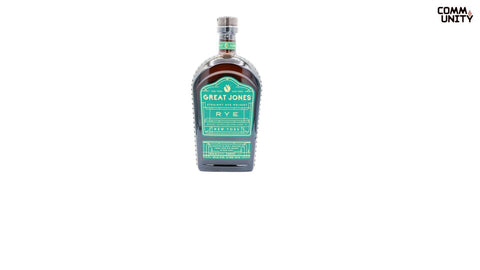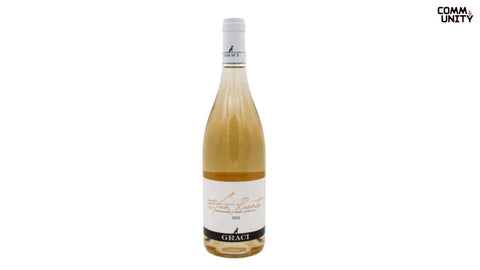To those who are wondering about bourbon vs whiskey, let's clear something up right away - bourbon is whiskey, but whiskey isn't always bourbon.
This simple relationship between bourbon and whiskey trips up tons of people when they're standing in the liquor store, trying to figure out what bottle to grab.
The differences go way deeper than most people realize. It's not just marketing fluff - there are real, tangible reasons why your bourbon tastes different from that rye whiskey sitting next to it on the shelf.

Great Jones Straight Bourbon Whiskey
The Legal Stuff
An interesting fact is that the government doesn't just let anyone slap the words "bourbon" on a bottle and call it a day. There are strict rules if you want to call a spirit bourbon. So, what is bourbon whiskey made from?
First up, it depends on the corn content . Bourbon must be at least 51% corn. That's not a suggestion, rather a federal law. This corn requirement is why bourbon tends to taste sweeter than other whiskeys. Corn brings in natural sugars that stick around through the whole process.
Then, there's the proof issue. As per the law, bourbon can't exceed 160 proof (which is 80% alcohol by volume). Most distillers actually keep it lower because higher proof strips away flavors. When it goes into the barrel, it can't exceed 125 proof. These limits preserve the character that makes bourbon taste like bourbon.
The barrel requirement is huge. Bourbon must age in new, charred oak barrels. Therefore, used barrels and steel tanks don't qualify. This rule alone probably adds more to bourbon's cost and flavor than anything else.
And yes, bourbon has to be made in America. Not just Kentucky, despite what some people think. You can make bourbon in California, Texas, or anywhere else in the US, as long as you follow the rules.
Whiskey Plays by Different Rules
Coming to bourbon vs whiskey, whiskey production is like the wild west compared to bourbon's strict regulations. Want to use 90% rye? Go for it. Feel like aging in used barrels? Nobody's stopping you. Want to add some wheat or experiment with different grains? Have at it.
This freedom creates incredible variety. Rye whiskey brings serious spice - think black pepper and cinnamon bark. On the other hand, wheat whiskey goes the opposite direction, offering softness and subtle sweetness. Corn whiskey can be completely different, and is sometimes not even aged at all.
The aging game changes too. While bourbon demands new oak, whiskey makers can use whatever barrels they want. Some age in old bourbon barrels, others try wine casks, and the adventurous ones experiment with different wood types entirely.
How They Actually Taste Different
Bourbon flavor starts with sweetness, thanks to that corn requirement. You'll typically taste vanilla and caramel right up front - that's the new oak talking. The charred barrel interior acts like a filter and flavor enhancer rolled into one.
However, bourbon actually isn't just sweet. Good bourbon has layers. You will taste cinnamon spice, especially in high-rye recipes. Some bourbons exude fruit flavors - baked apple, dried cherries, or even tropical notes.
Thanks to the new oak barrels, every drop of bourbon pulls vanilla, caramel, and tannins from virgin wood. This creates a consistent flavor foundation that experienced drinkers recognize immediately.
Whiskey flavors run the gamut. A 95% rye whiskey will punch you in the face with spice. It's dry, peppery, and aggressive in the best possible way. On the flip side, a wheat whiskey might taste like liquid bread with honey drizzled on top.
International whiskeys add even more complexity. Scottish single malts can taste like campfire smoke or ocean spray. Irish whiskeys often bring green apple and honey notes. Japanese whiskeys might surprise you with umami flavors you didn't know could exist in a spirit!
Geography Matters More Than You Think
Kentucky dominates bourbon production for all the good reasons. The limestone-rich water here filters out iron, which would make whiskey taste metallic. The climate ranges from hot summers to cold winters, making the barrels expand and contract. This pushes the bourbon deeper into the wood and back out again, creating intense flavor.
An interesting fact is that even the warehouse location affects taste. Barrels stored on higher floors age faster because heat rises. Some distilleries rotate barrels to even out the aging, while others embrace the differences and create single-floor expressions.
Coming to whiskey, its production happens everywhere. Scotland's cool, damp climate creates different aging conditions than Kentucky's temperature swings. Ireland's milder weather produces different results entirely. Each location leaves its fingerprint on the final product.
The Aging Game
Bourbon aging gets complicated fast. Regular bourbon has no minimum aging requirement, but "straight bourbon" must age at least two years.
The "angel's share," the portion that evaporates during aging, runs about 2%-4% per year. In hot climates, the percentage is even higher. This natural concentration intensifies flavors but also increases costs. Every year that bourbon sits in the barrel, less of it remains.
Whiskey aging offers more flexibility. While some whiskeys benefit from quick turnaround in active barrels, others improve with decades of slow aging. The choice of barrel - whether it’s new oak, used bourbon barrels, wine casks, or exotic wood - dramatically impacts the final flavor.
Making Your Choice
Bourbon offers consistency within variety. You know you're getting corn-forward sweetness with oak influence, but individual expressions can vary widely in secondary flavors and intensity.
Whiskey provides adventure. You might love a spicy rye one day and prefer a smooth wheat whiskey the next. The category rewards exploration and experimentation.
Price doesn't always indicate quality in bourbon vs whiskey. Some fantastic bourbons cost under $30, while some whiskeys priced at $200 disappoint. The key is understanding bourbon or whiskey is by finding expressions that deliver those flavors consistently.
Both bourbon and whiskey deserve spots in any serious drinker's collection. Bourbon provides that distinctly American flavor profile - sweet, robust, and oak-driven. Whiskey opens doors to flavors from around the world and different production philosophies.
Final Thoughts
The next time someone asks about bourbon versus whiskey, you can explain that it's not really a competition. They're like members of the same family, but with different personalities, and are both worth getting to know.
Shop the top collection of whiskey and bourbon from the reliable store, Community Wine & Spirits, to taste the best.


